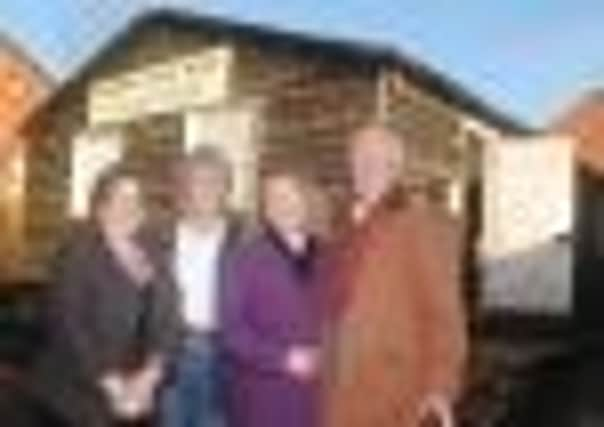First World War hut likely to be saved for posterity


The Craven Lane Hall in Southam is believed to be the only surviving and accessible First World War barracks hut left in England.
In 2007 it was set to be knocked down and flats built in its place.
Advertisement
Hide AdAdvertisement
Hide AdBut this week Jim Steele, chairman of the Craven Lane Hall management committee, learned they had won a “first round pass” of £24,700 from the Lottery Fund to enable them to work up a full restoration bid of £249,000 within the next two years.


After the controversy surrounding its demolition, Craven Lane Hall was donated, anonymously, to the Heart of England Community Foundation based in Coventry. It is staff at the foundation, in conjunction with the hall management committee, who will prepare the full Lottery application in the hope of getting the hut fully restored in time to mark the 100th anniversary of the First World War.
Mr Steele first became involved in trying to preserve the old barrack block - originally used in Belgium during the First World War - through his membership of Southam and District Lions.
He said: “The billet was one of many flat-packed and sent back to England after the Great War. They all went up for auction in Sutton Coldfield in 1919.
Advertisement
Hide AdAdvertisement
Hide Ad“Southam was still a village in those days and our branch of the Old Comrades - which later became the British Legion - sold £1 shares to other villagers so that they could buy the hut for £74, and use it as a recreation hall for the returning troops.
“Mr Hancock, or Hancox, the local carpenter, undertaker, chimney sweep and pig-killer, offered to transport it back on from Sutton Coldfield on his hay cart.”
From the start of the Second World War, in 1939, the hut was also used for weighing and innoculating local babies.
In more recent years the hall has been in constant use for meetings, social events and the weekly mini-market.
Advertisement
Hide AdAdvertisement
Hide AdBut it also has great education value as it is still has its original layout from the First World War when it accommodated perhaps 20 soldiers.
The hall committee - which includes Diane Ellard, Pauline Meade, Lionel Ball and Pam Ball and key-holder David Minney - have been trying for the past four-and-a-half years to win grants to maintain the building.
David Minney’s mother Julia, has acted as volunteer caretaker for the past 40 years and, with others, helped raise funds to maintain the deteriorating building with running repairs carried out by townsfolk in their spare time.
Jim said: “After nearly losing this historic, much-loved and very useful building, we finally seem to have secured its future.
Advertisement
Hide AdAdvertisement
Hide Ad“We hope to combine educational visits and historical re-enactments with a more modern use of offering low-cost starter units to people with business ideas.”
Kate Mulkern, director of the Heart of England Community Foundation, said: “Southam people have been adamant that they want the hall to be restored rather than replaced and were delighted to learn the Heritage Lottery Fund has offered its initial support.
“We will use this money to create a delivery plan and, if the Lottery Fund supports that too, then a full grant will follow.”
Anyone with stories and photographs of the hall during the First World War is asked to get in touch with Barbara Goulden at the Courier on 457726 or Kate Mulkern on [email protected]
History of the hut
Advertisement
Hide AdAdvertisement
Hide Ad1914-18 The Southam hut was first used to billet soldiers in Belgium during the First World War.
1919 Along with several other redundant barrack blocks it was flat-packed and shipped back to England where it was advertised to be sold at auction in Sutton Coldfield. Southam was still a village at that time and members of its Old Comrades group began selling £1 shares to raise enough money to purchase a hat for use as a recreation hall for ex-servicemen. Their bid of £74 was accepted and Mr Hancox, or Hancock, who was delivering hay to Coventry, agreed to bring the hut back on his cart.
1939 By the start of the Second World War the building was also being used as an Infant Welfare Hut where local children were taken to be weighed, innoculated and dosed with cod liver oil.
1945-55 After the war their mothers would no doubt be issued with milk and free orange juice as the rationing of some foodstuffs continued until 1955.